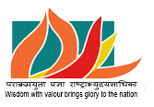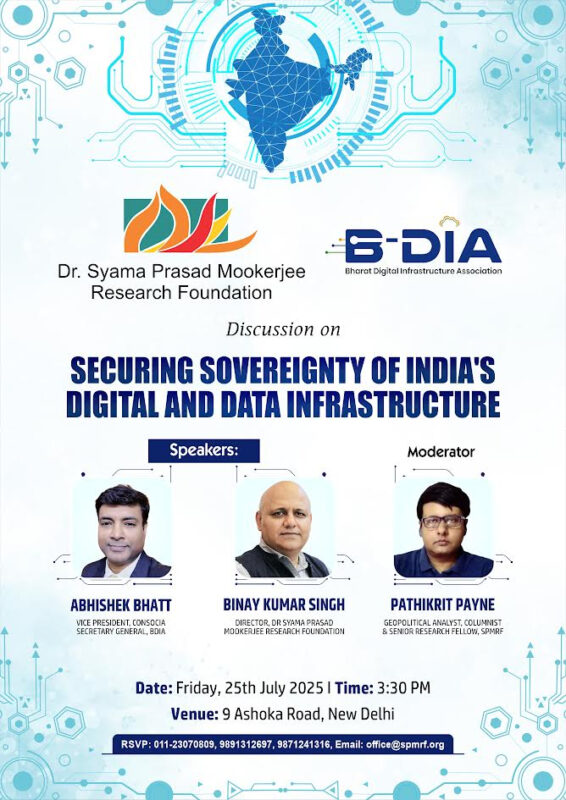Critics dismiss the ‘urban Naxal’ threat as a figment of PM Modi’s imagination. But a closer look reveals a deliberate strategy to undermine India’s unity under the guise of celebrating diversity
Last week, Prime Minister Narendra Modi made a statement during his address on the occasion of Rashtriya Ekta Diwas that I found concerning, yet undeniably accurate. Concerning because, in a country like ours—vast in size and enriched by a remarkable legacy of freedom struggle and patriotism—he noted how “talk of unity seems to be a crime” and how “urban Naxals” criticise those who speak of unity and patriotism. Although worrying, what the Prime Minister said is indeed true. One can see how fully connected he is, and remains, with ground realities.
The concern raised by Prime Minister Modi is troubling, as such hostility towards unity, in a nation that has endured partition, displacement, and numerous prolonged separatist movements, is genuinely unsettling. It calls for a broad and penetrating awareness movement to counter such a destructive mindset and narrative.
Only self-styled, ostrich-like commentators, and members of the infamous ‘Khan Market’ cabal, pretend as though the category of ‘urban Naxals’ and their vitriol do not exist. Not only do they exist, but they also voice their deep-seated disdain for terms like ‘unity’ and ‘patriotism’ each time Modi speaks of strengthening unity and celebrating diversity.
For ‘urban Naxals’, India’s diversity exists solely to support their thesis of India as an imagined nation with an inherent right and tendency towards secession. These fanciful frameworks and categories, which ‘urban Naxals’ frequently regurgitate, are given a veneer of respectability by a segment of these inexperienced and disconnected commentators who fail to distinguish between unity and uniformity.
Prime Minister Modi spoke of celebrating and safeguarding both our diversity and unity. He rightly warned against tendencies—especially among ‘urban Naxals’—to create fault lines. The ‘one nation, one ration card’ policy has provided immense relief to countless people who depend on it each month. The ‘Gulmohar Park’, ‘Jor Bagh’, ‘Chanakyapuri’, ‘Defence Colony’, ‘Vasant Vihar’, ‘Paschimi Marg’, resident commentators will not understand the impact that this alleviation of hardship has had on daily wage earners and itinerant workers far from home.
The ‘one civil code’ and ‘one election’ concepts are both long-awaited. The former would be a true tribute to the equity ideals of the Constitution and of its makers, while the latter—last in effect until 1967, when Indira Gandhi decided to disrupt those who defeated her—would save significant national resources and focus more on productive, results-oriented governance.
When Modi speaks on these matters, he is, in fact, articulating the demands of the majority. Those who oppose him on this count also took issue with the call for ‘One Nation, One Constitution’. They resisted the abrogation of Article 370 and the extension of rights conferred on Indian citizens by the Constitution to all regions and sections of India, applied to all people without differentiation. The most vocal and articulate opposition to these measures came from the ‘urban Naxals’.
Commemorating ‘Rashtriya Ekta Diwas’ on Sardar Patel’s birth anniversary is a fitting tribute to this iconic leader, whose unwavering efforts, farsightedness, and leadership strengthened India’s unity and secured her freedom. Sardar Patel has long been a challenge to ‘urban Naxals’—he had little patience for hollow dialectics aimed at undermining India’s unity and her newly won freedom.
The Congress’s neglect of Patel’s contributions does not mean that they should remain uncelebrated. The Nehru-Gandhi family’s choice to ignore Patel’s contributions and downplay his stature did not obligate Modi to follow suit. Not only this year, but since the grand Statue of Unity was erected and dedicated to the ideals of Indian unity, PM Modi has addressed the nation from its grounds.
Modi initiated the construction of the statue through a historic, large-scale, and deeply resonant people’s movement—‘Jan Bhagidari’. Such an initiative was unprecedented, at least in independent India. Across the nation, farmers and tillers willingly donated their used farm implements, which were then incorporated into the construction of Sardar’s statue. This successful mass movement sent a powerful message of social justice and symbolised the vision of unity in diversity. The Statue of Unity, built by Modi alongside the people of India, particularly the labourers and tillers, embodies that message. For ‘urban Naxals’ and their sympathetic commentariat, the Statue of Unity and the sight of Modi speaking under its shadow is thus obviously anathema.
Only those who are already phantoms in mind believe that cautioning people against and unmasking ‘urban Naxals’ is about creating ‘phantom enemies’. For those of us from West Bengal, we perhaps know better than most what Naxalism represents, especially the threat of ‘urban Naxals’. The 1970s were among the state’s most harrowing years. An entire generation was effectively sacrificed on the altar of ‘urban Naxalism’, with their misguided ideals fostered by a legion of intellectuals, academics, and so-called respectable elders. Many who survived the torment of that era have remained scarred for life. The period was marked by gruesome acts: vice-chancellors were murdered, opponents were beheaded, and bombs were stored in educational institutions and hostels as part of an entrenched urban phenomenon. Ironically, many of those at the forefront of the Naxal movement later distanced themselves and found positions in Western academia.
It was also a time in India when dissent was brutally suppressed, custodial deaths and extrajudicial eliminations were frequent, and false charges were routinely imposed. Those who oppose Modi’s call for unity today experienced that India of the past, yet they appear to have selectively forgotten its violent legacy.
The ‘urban Naxal’ cabal of today, many of them perched in the safety of the academia and drawing government or establishment salaries, advocate the sick theory of diversity as a license for fissiparousness. The collaboration between ‘urban Naxals’ and banned groups such as the PFI and CPI (Maoist), whose stated goal is India’s fragmentation, has repeatedly been exposed. Once their connections are laid bare, these ‘respectable’ individuals attempt to disown or justify their ties through convoluted language and logic. Behind the veneer of respectability lies a dangerous ideology — one that ultimately seeks the disintegration of civilisational India. PM Modi asks us to unmask these, and rightly so. It ought to become a national duty, a duty owed to India’s present and future.
Modi and his supporters are committed to ensuring an India that is solidly united, a unity that consciously preserves, perpetuates, and celebrates its diversities. Unlike the ‘urban Naxals’ and their intellectual and journalistic backers, for whom diversity implies division, Modi’s vision sees diversity as reinforcing India’s inherent oneness.
Modi has never advocated uniformity; he understands the distinction. Having spent his formative years in the RSS, a diverse organisation working across varied fields, communities, and regions of India, Modi is acutely aware of how diversity forms the bedrock of India’s identity. He also recognises the need for vigilance against the forces of separatism promoted by the self-styled defenders of diversity — forces that are well-organised, well-funded, and persistently active. If these forces succeed, India’s unity could be shattered.
Unity is both India’s desire and necessity. Unity is paramount, and Prime Minister Narendra Modi must continue to stress this essential need. External measures, such as ‘one nation, one law, one ration card’, will only serve to strengthen this unity and raise awareness of its importance. This is the need of the hour, with other considerations secondary, at least for the time being.
SOURCE
https://www.news18.com/opinion/opinion-unity-thats-paramount-and-under-attack-9111441.html
(The views expressed are the author's own and do not necessarily reflect the position of the organisation)



